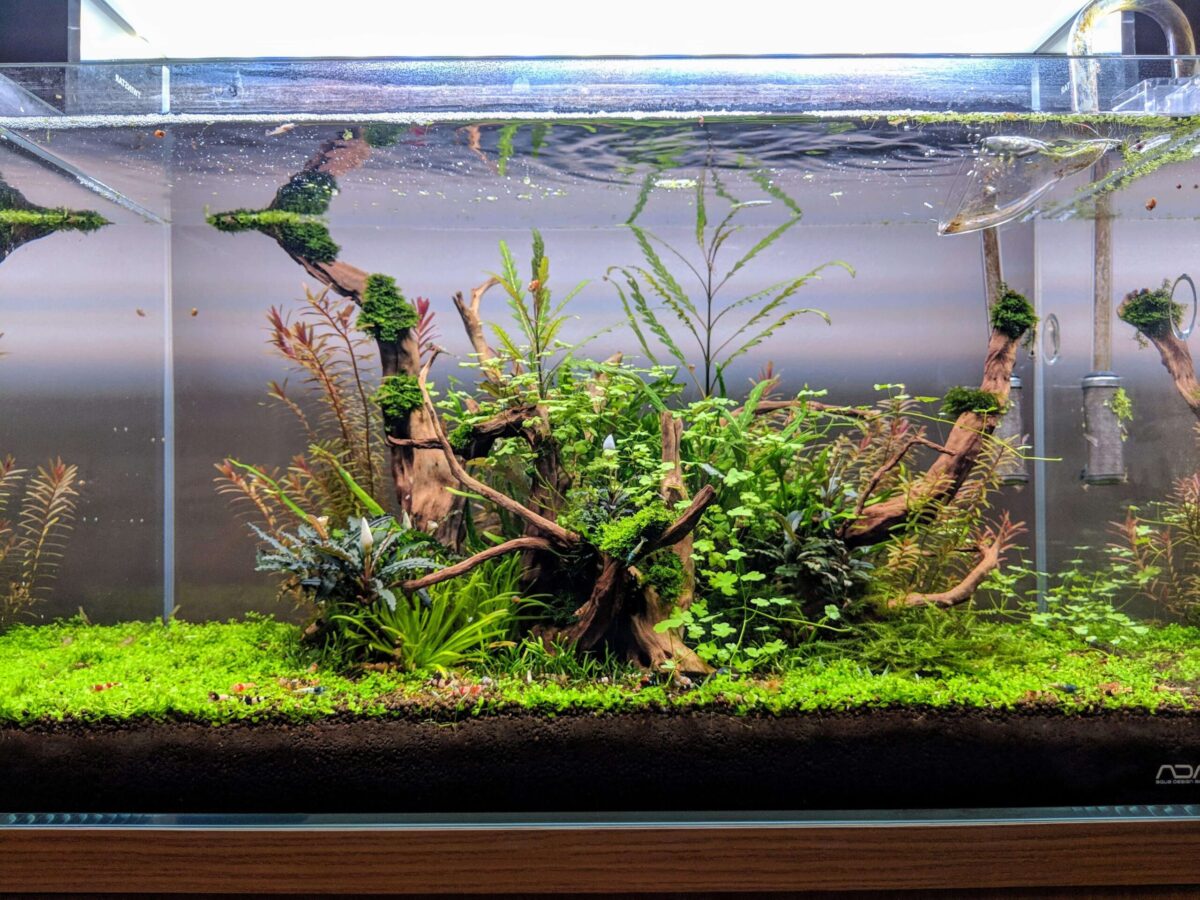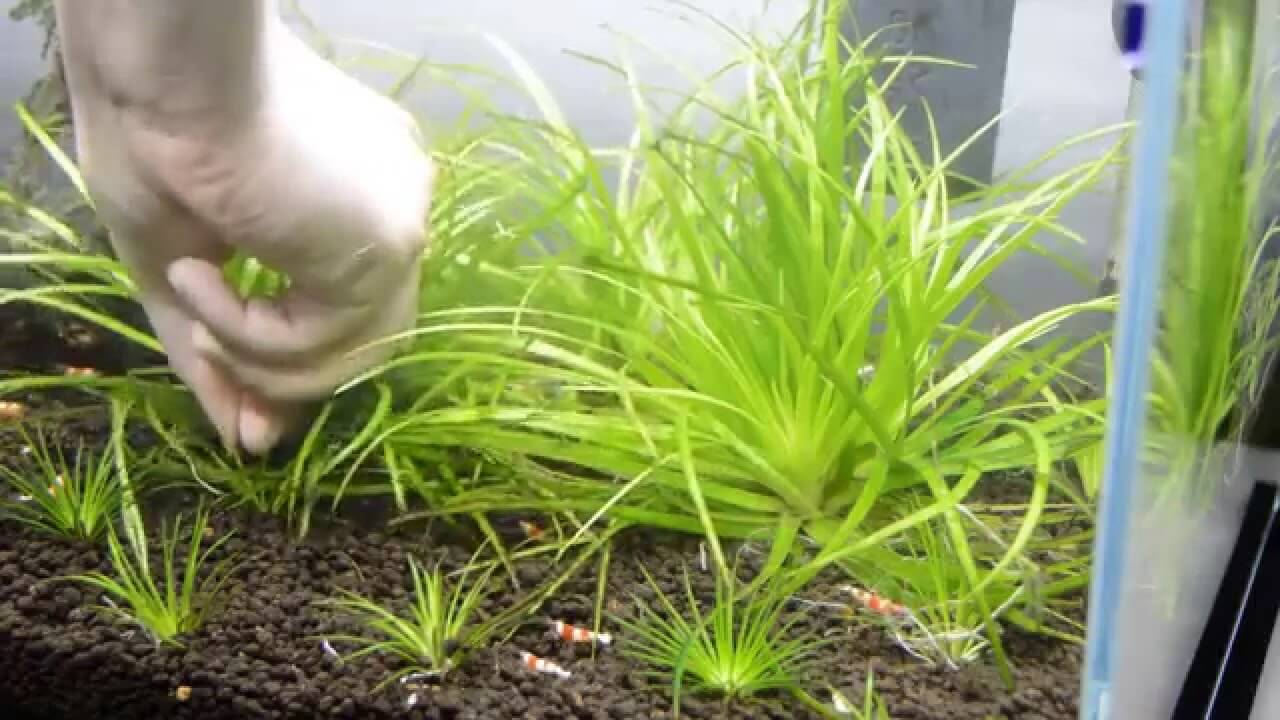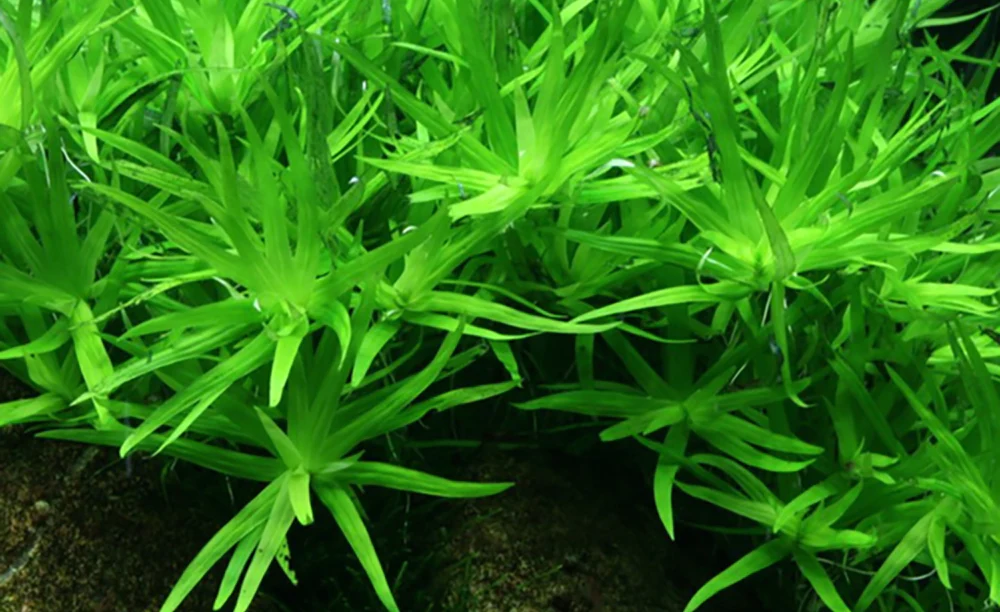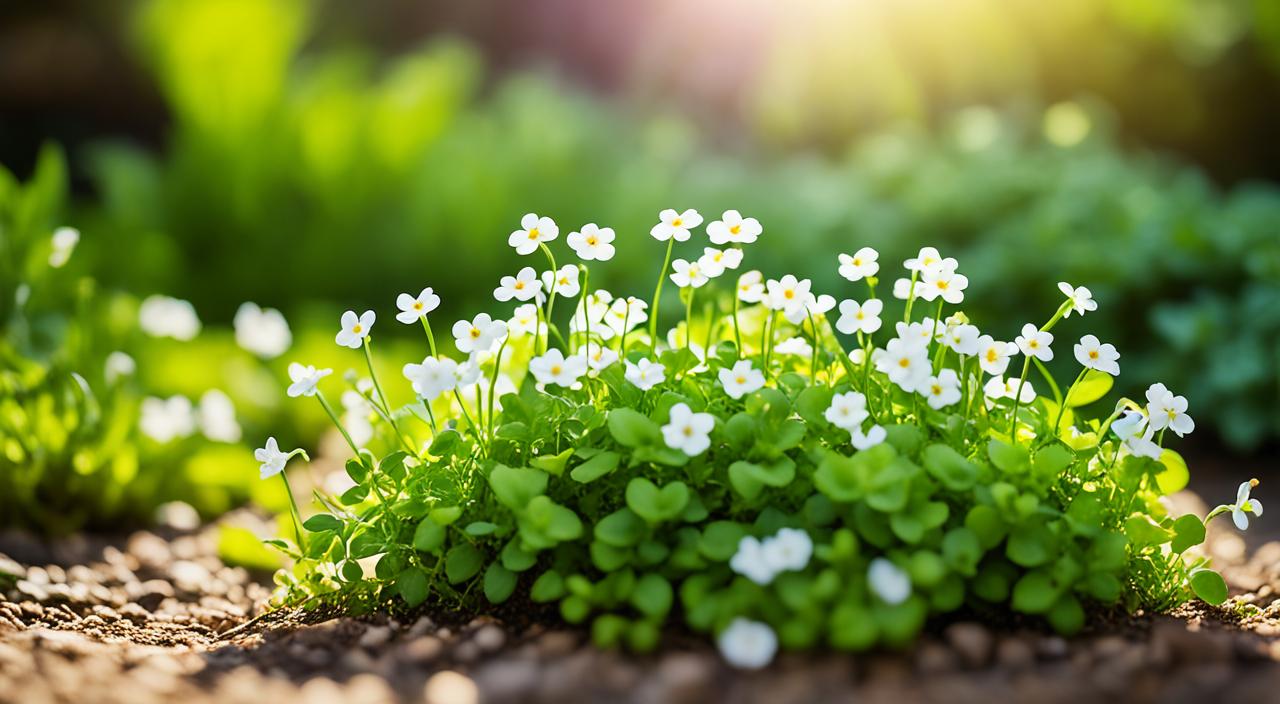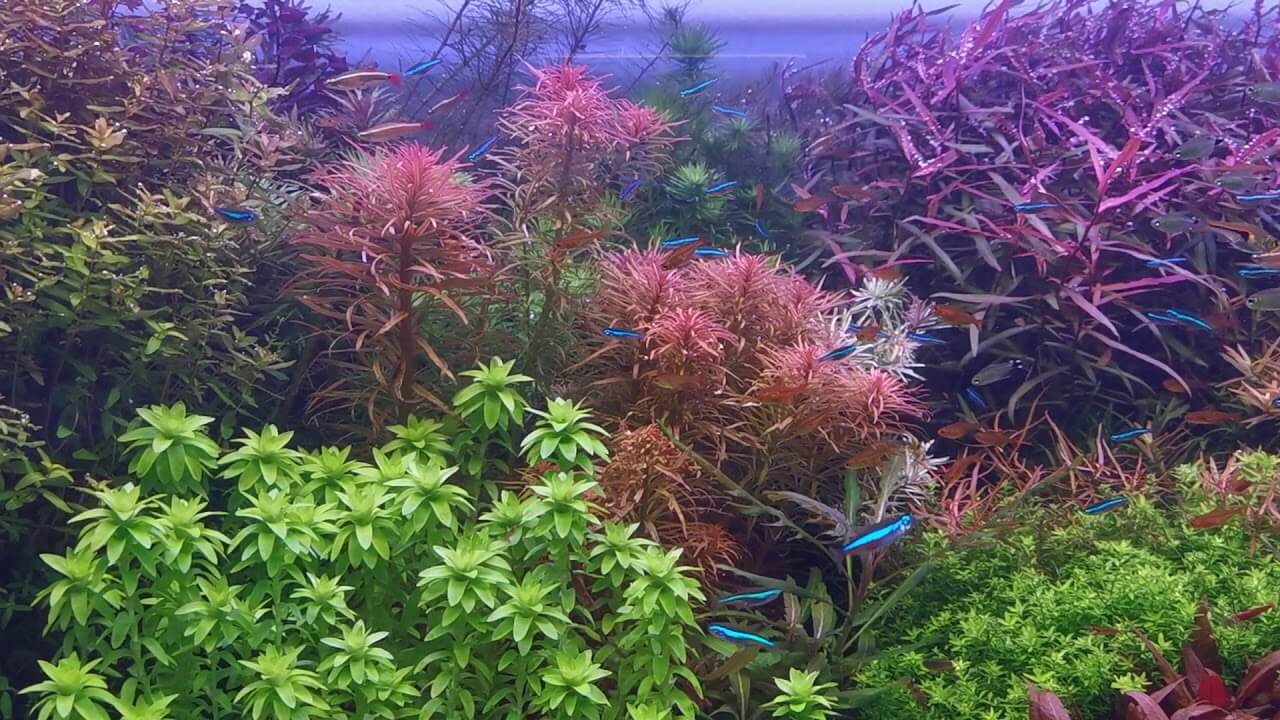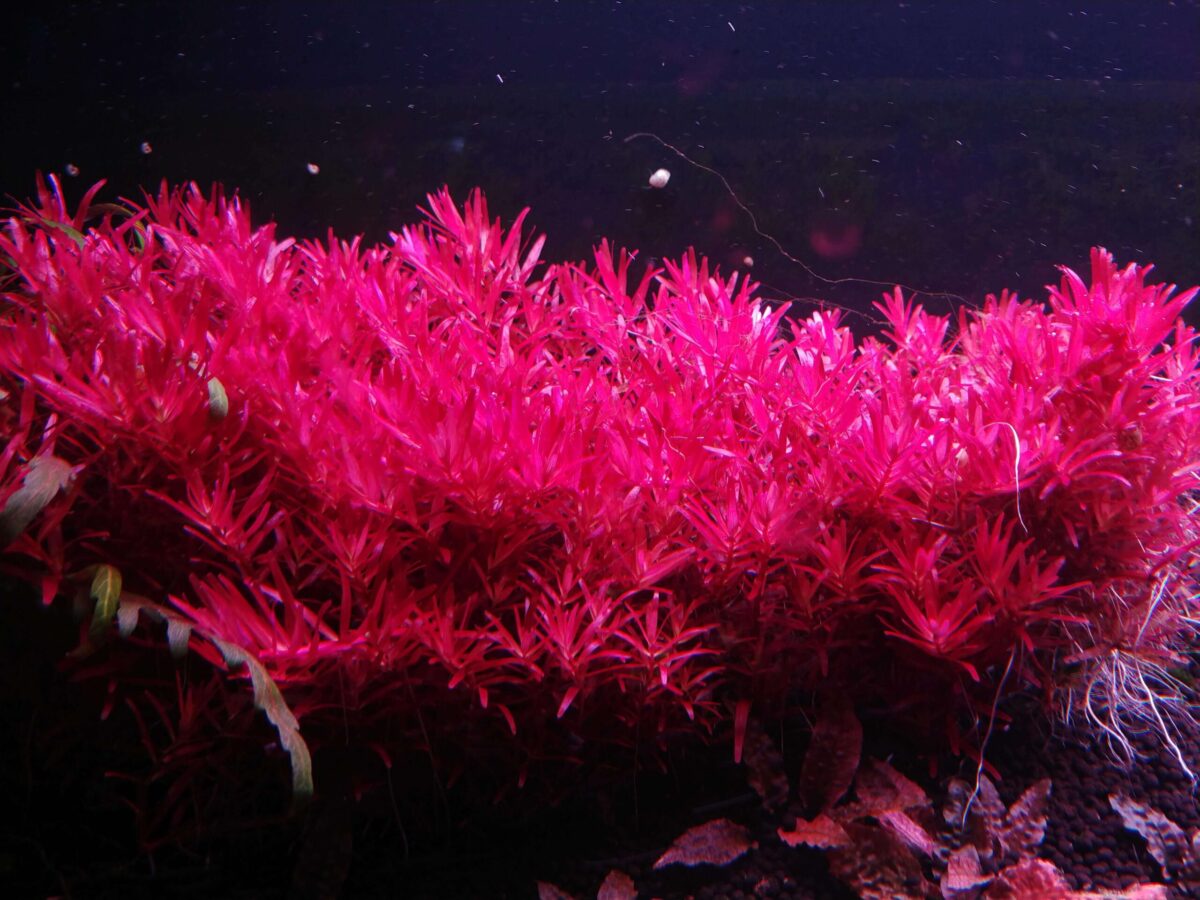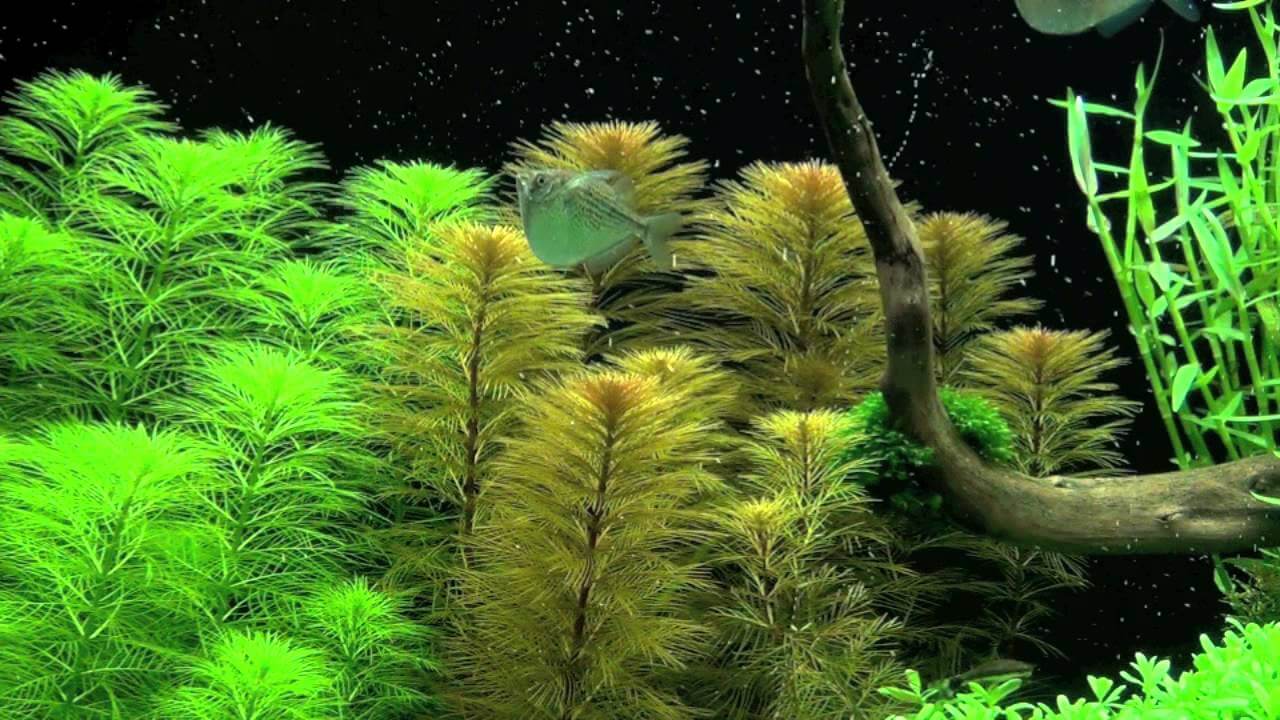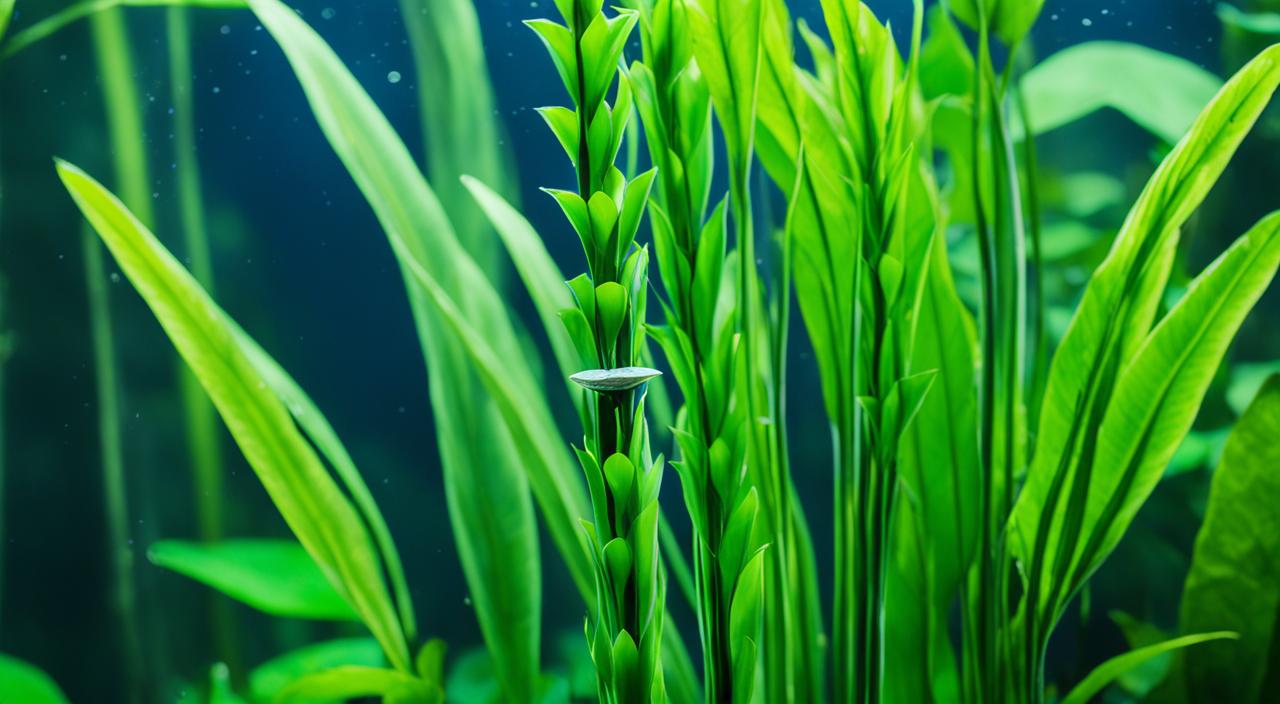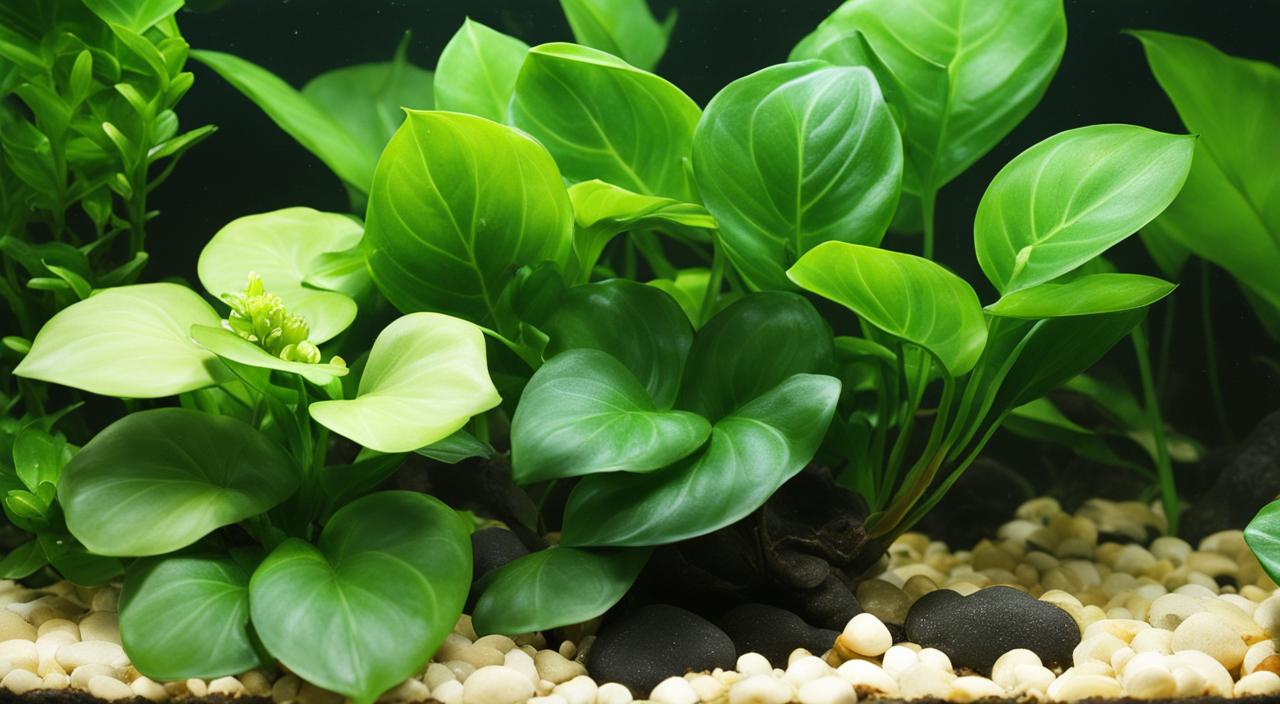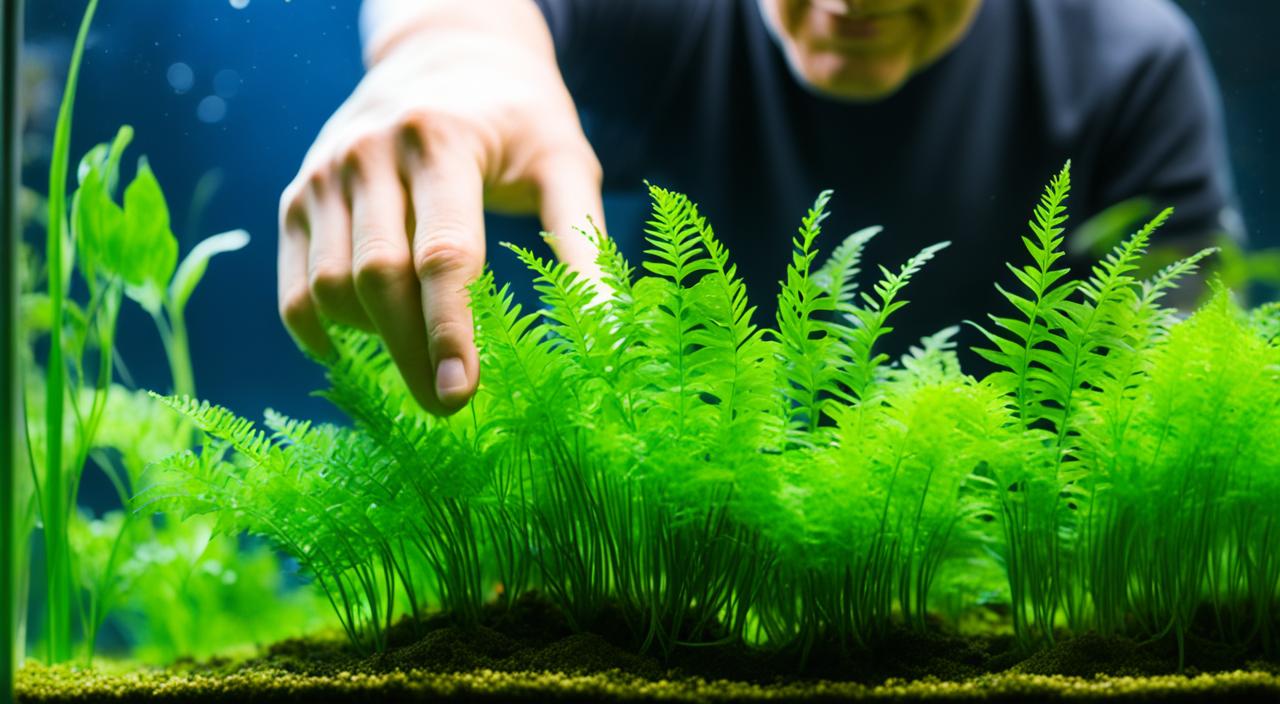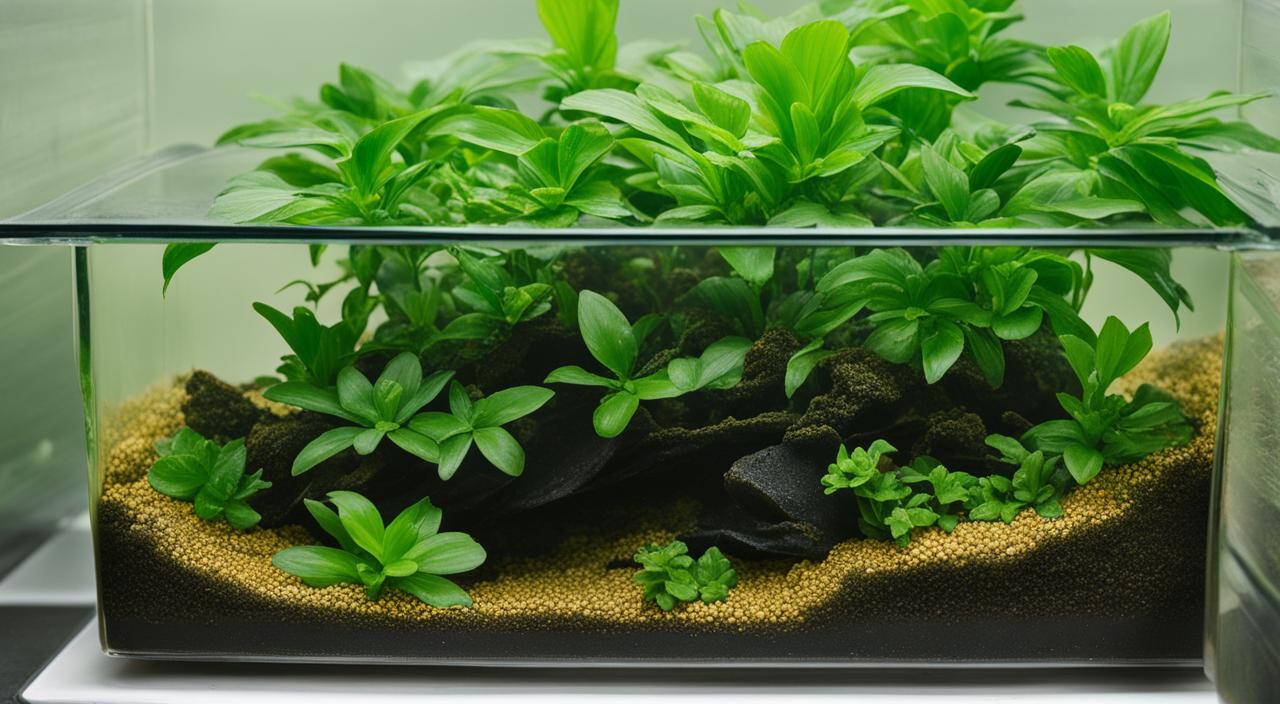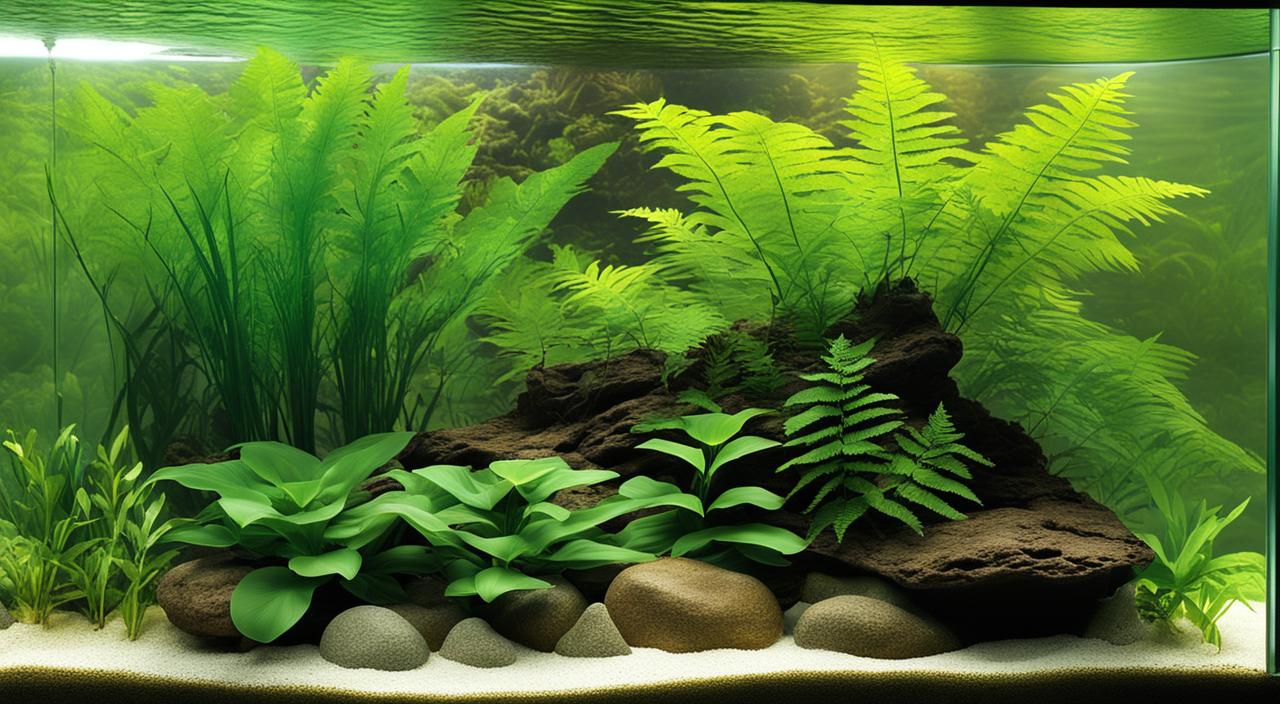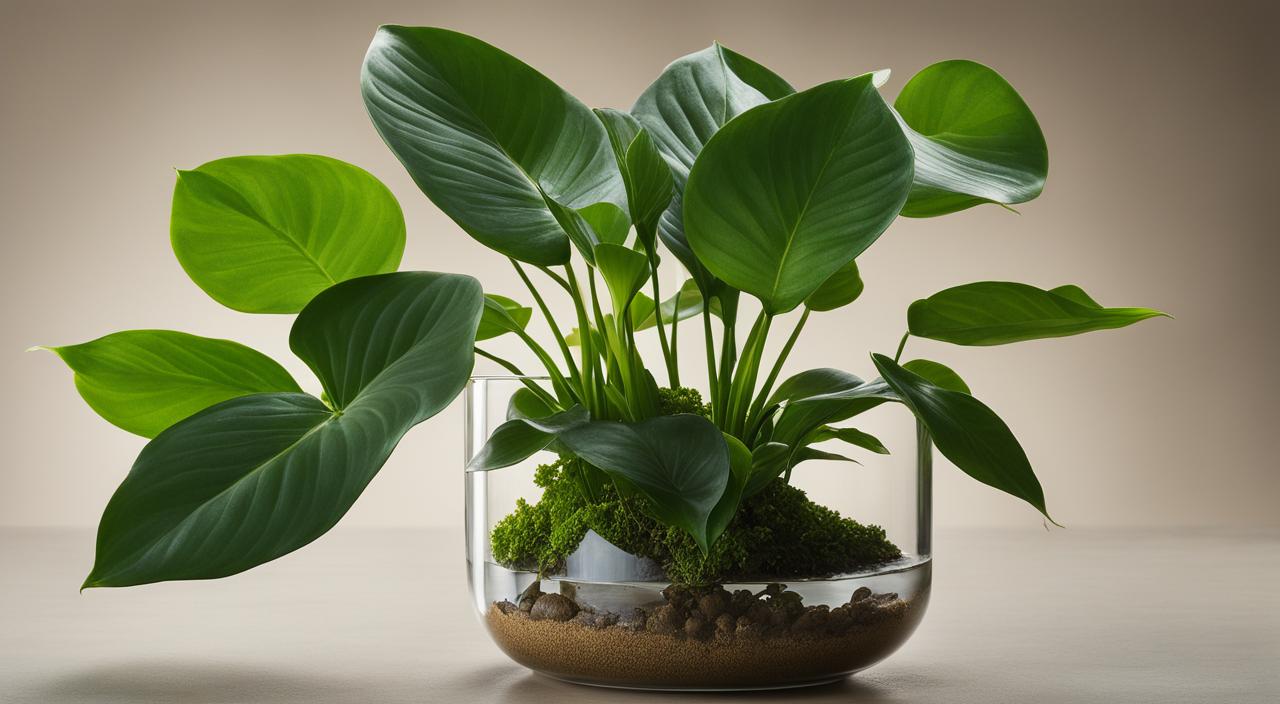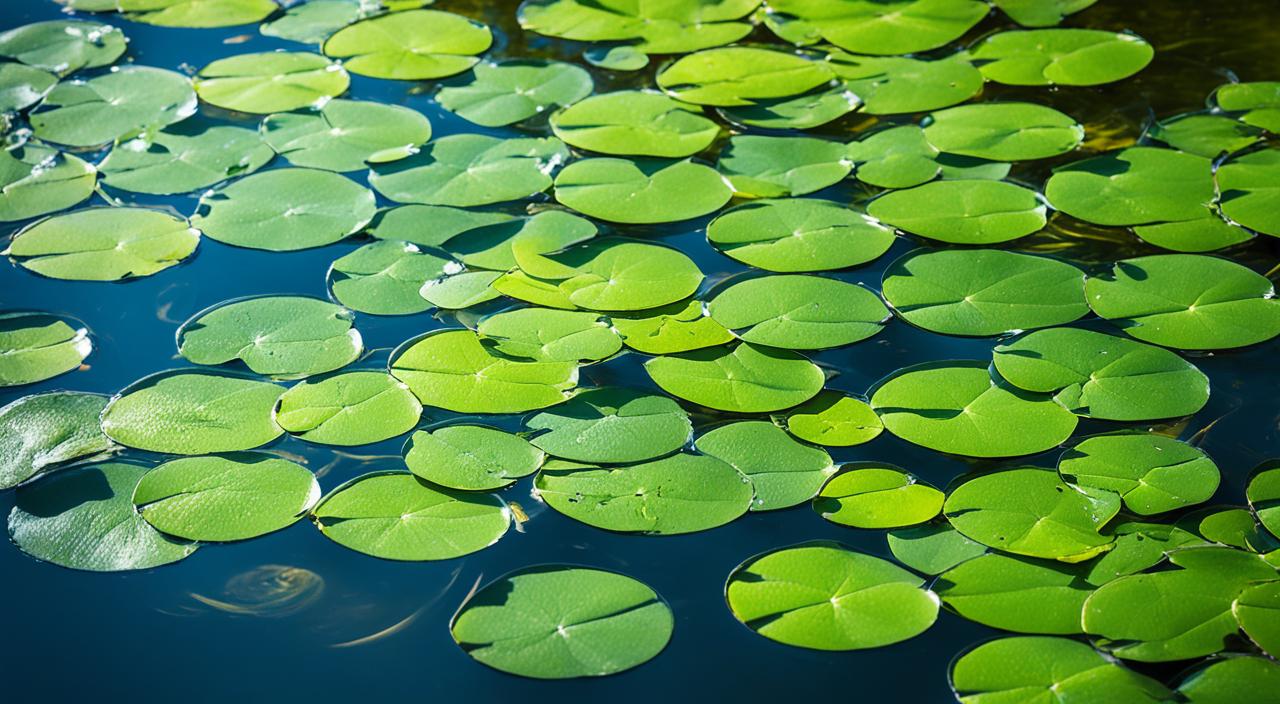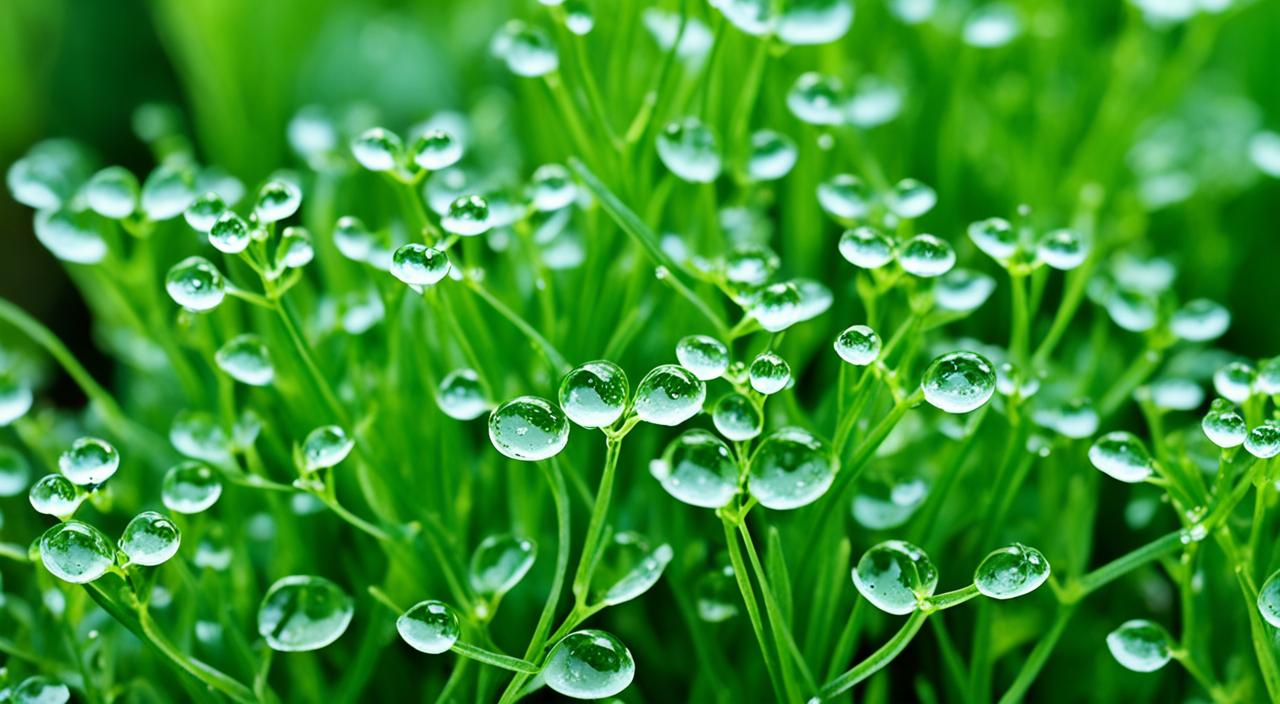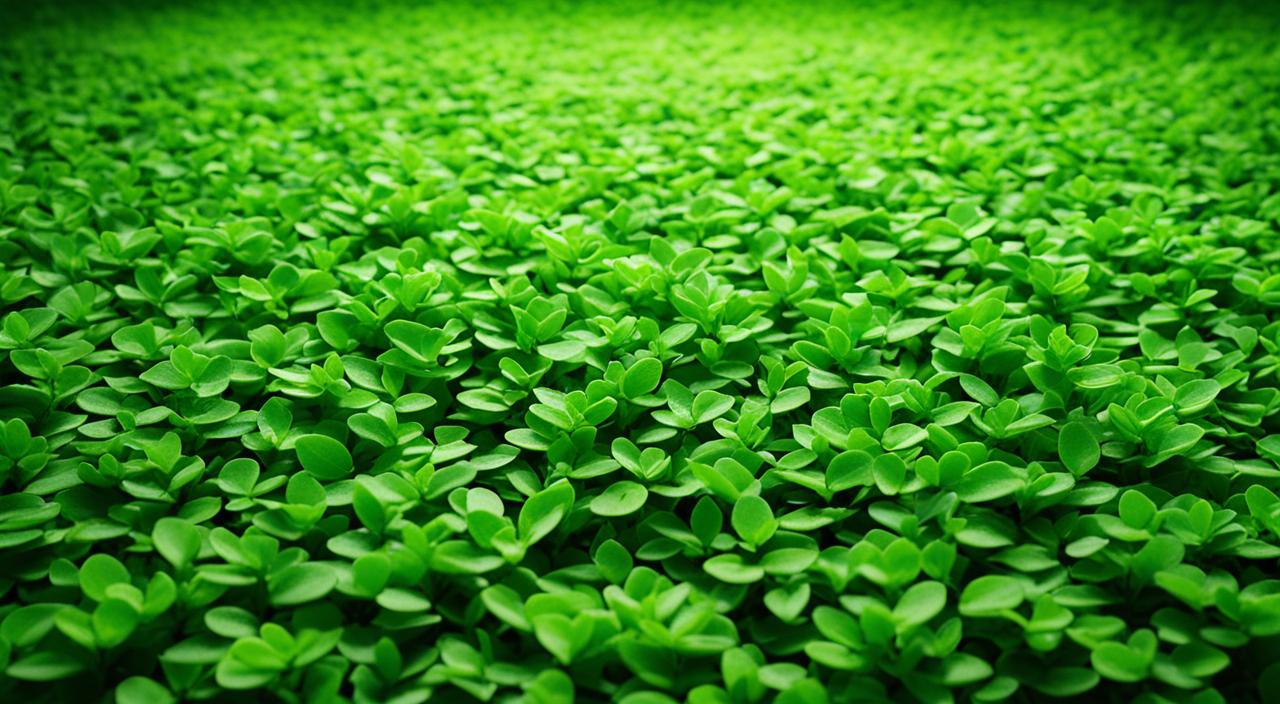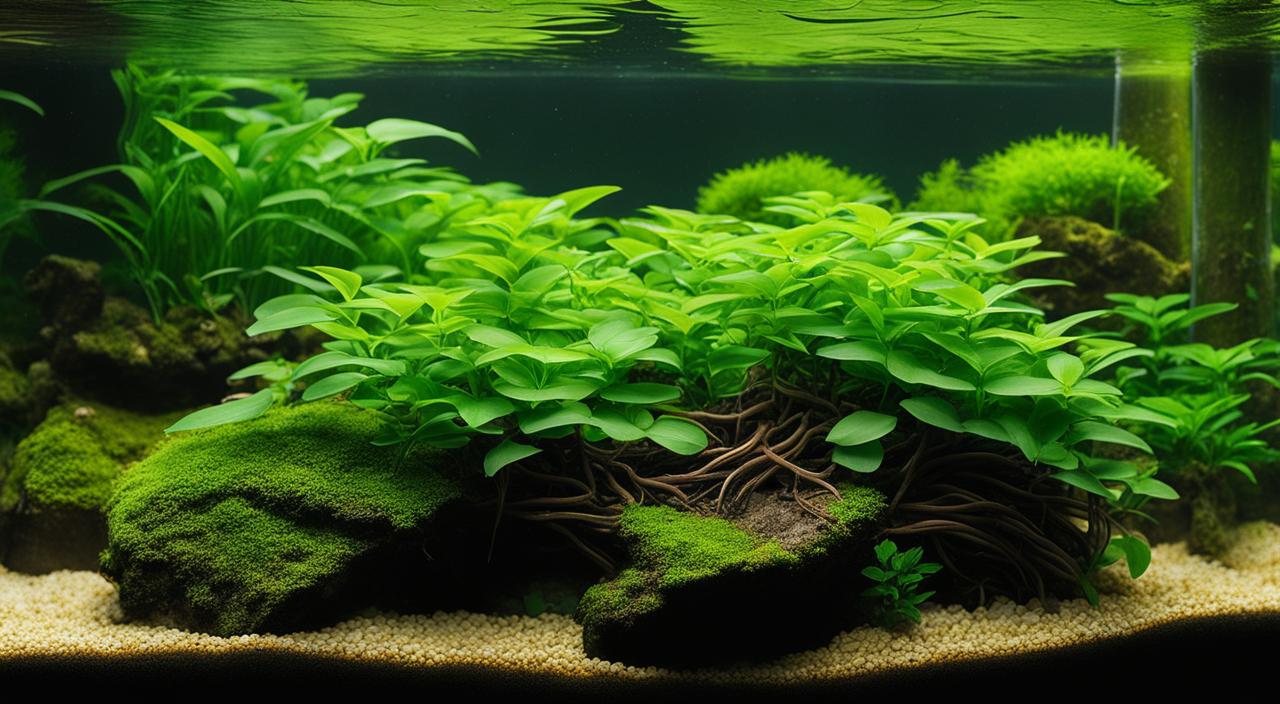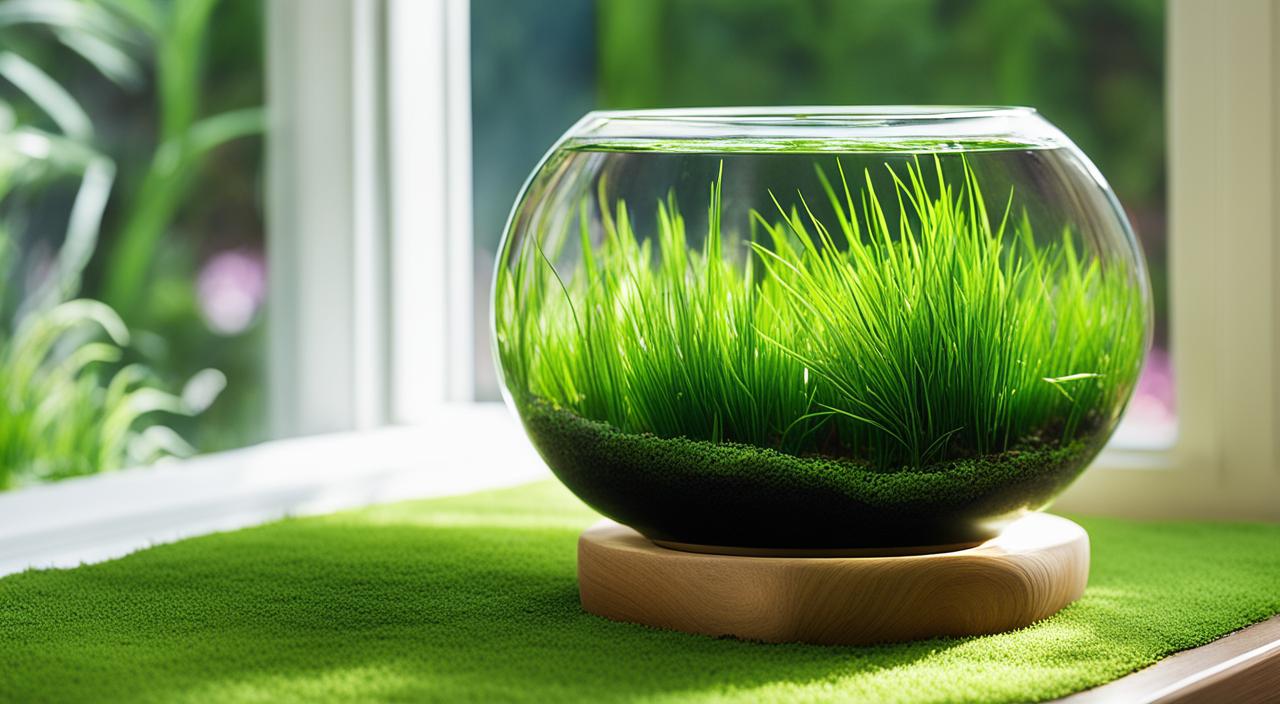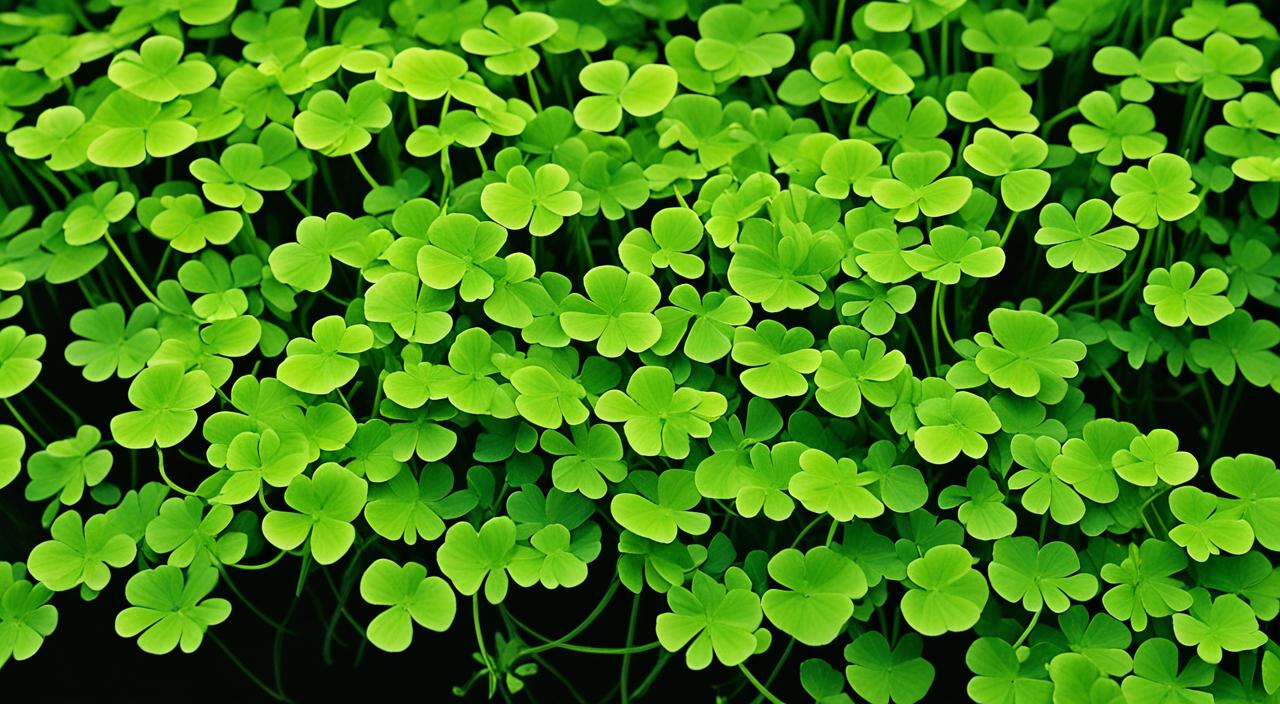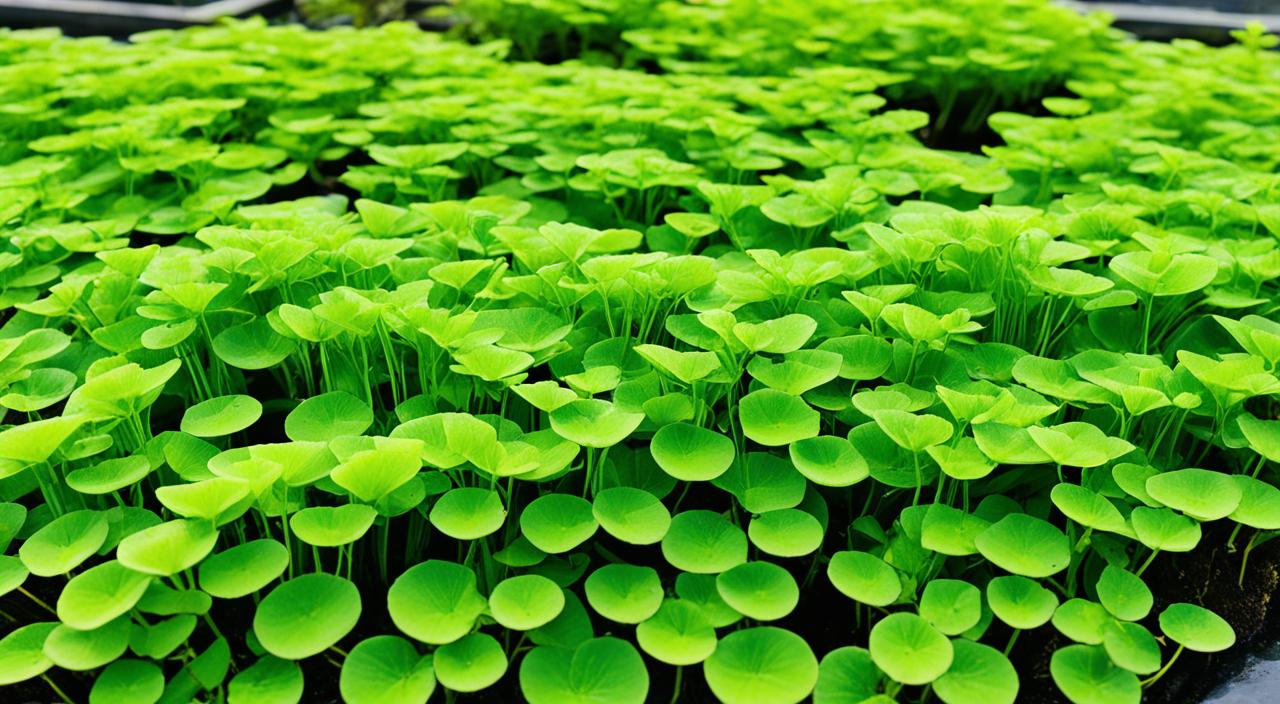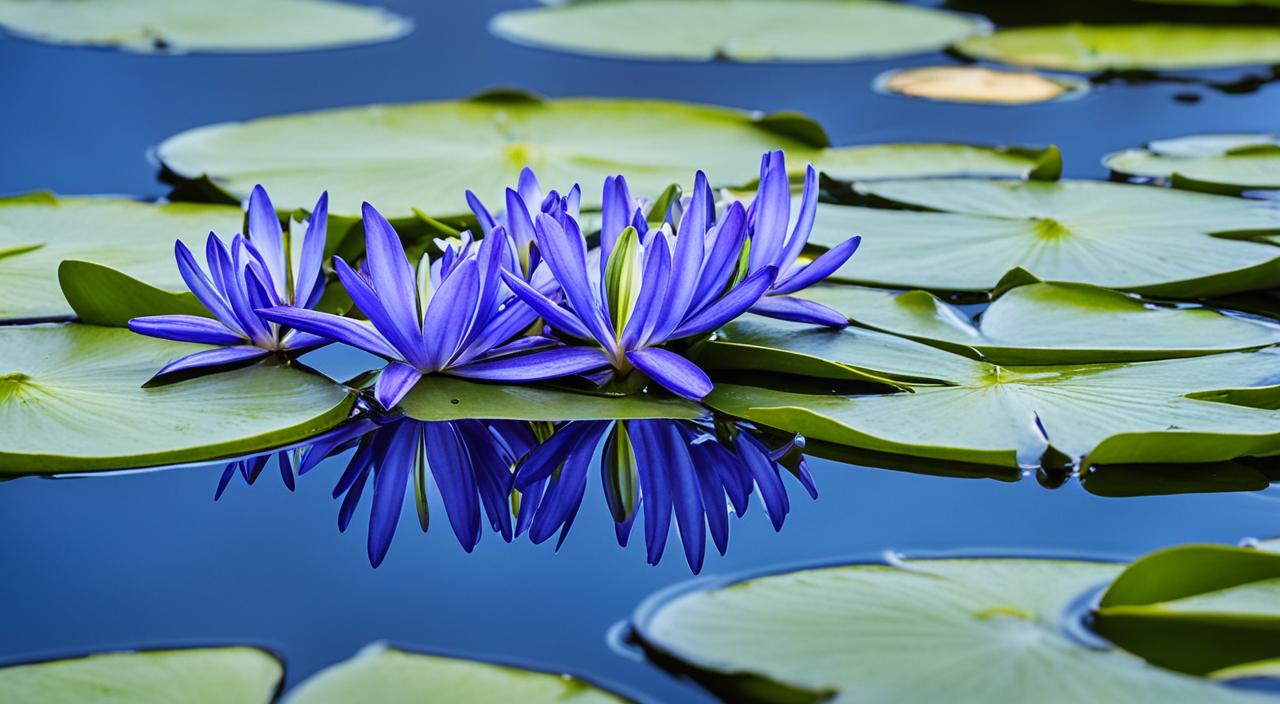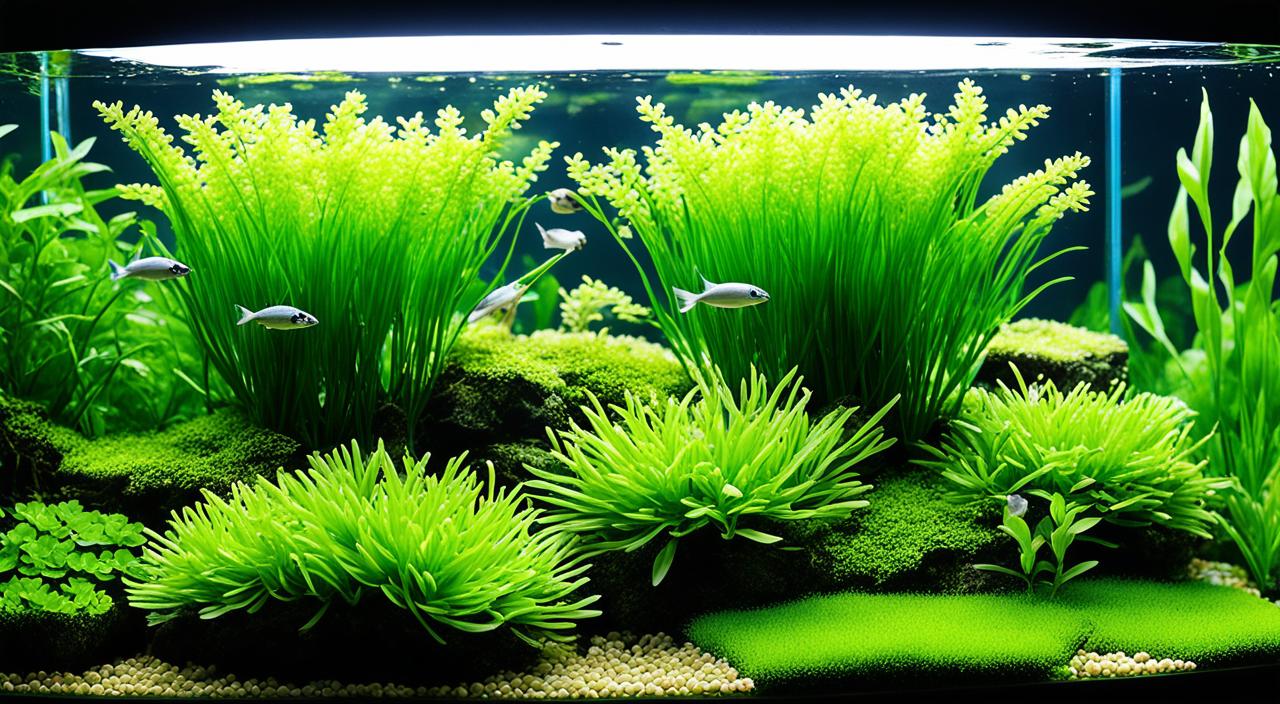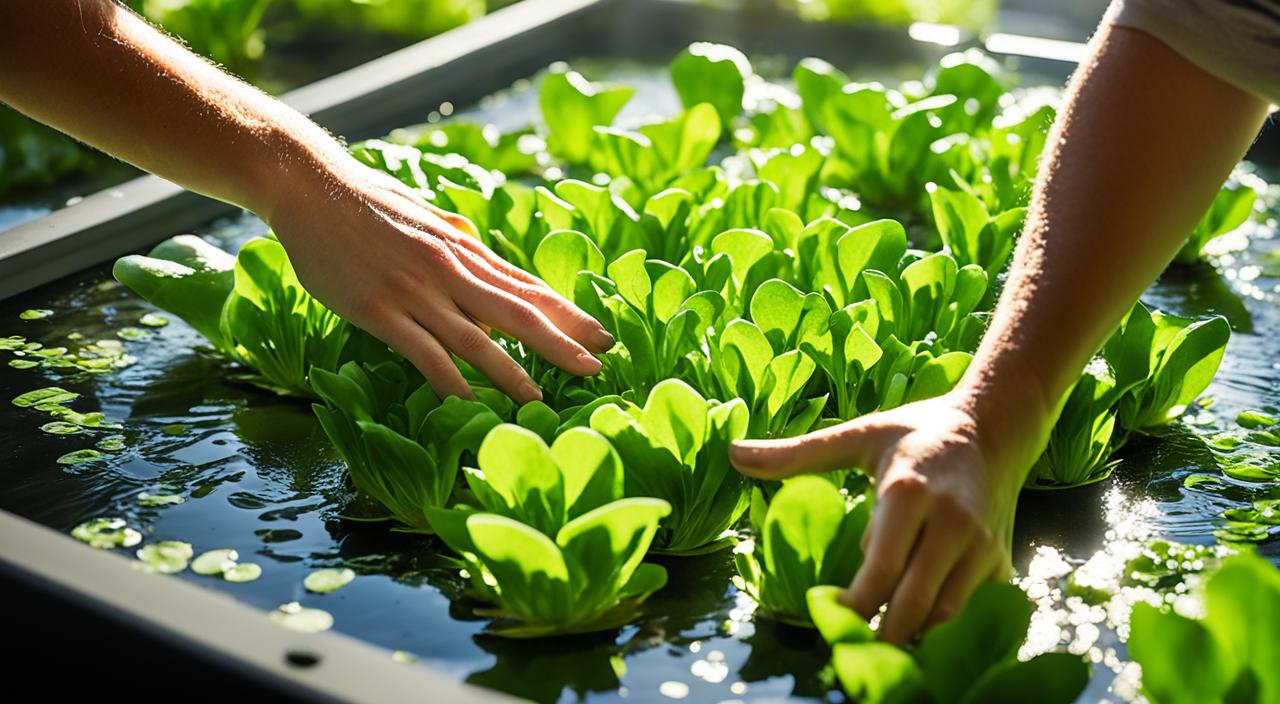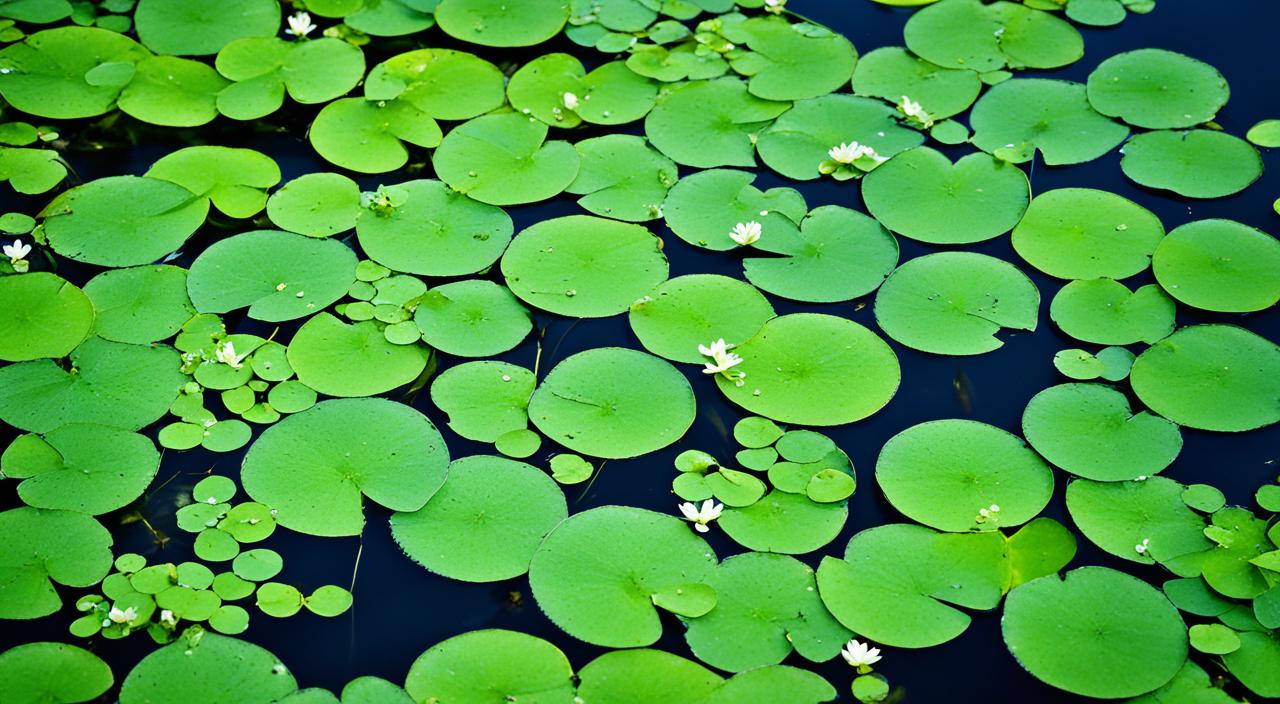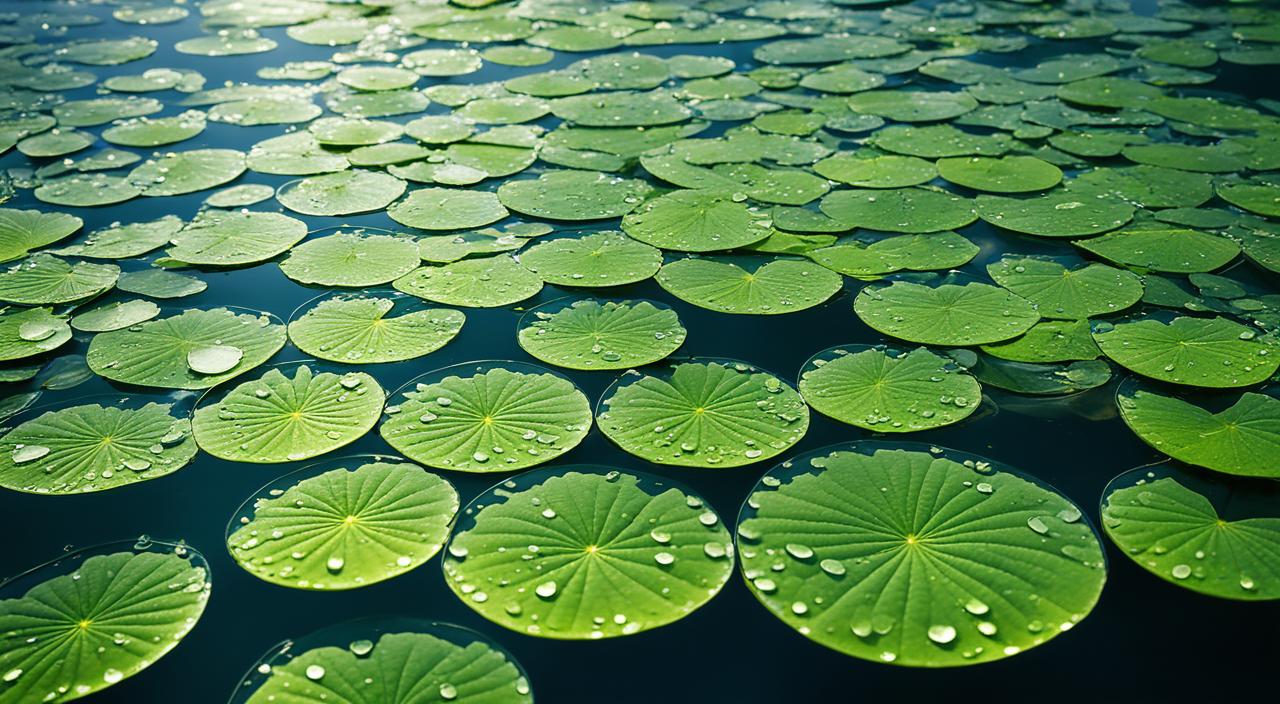Overview
Aquascaping is creating an underwater landscape that mimics the natural world. Mid-ground plants are essential for bridging the gap between the foreground and background of the aquascape, providing visual interest and acting as a backbone. They also play a crucial role in the aquarium’s ecosystem by contributing to water quality and giving oxygenation.
The plants are at the heart of this aquatic tapestry, especially those occupying the tank’s mid-ground. Mid-ground plants are pivotal in bridging the visual gap between the lush foreground and the towering background, crafting a sense of depth and complexity crucial for a balanced and captivating aquascape.
Mid-ground plants are crucial for an aquatic garden’s aesthetic appeal, water quality, and biological filtration. They offer visual interest and serve as a backbone for the aquascape while providing shelter and privacy for aquatic inhabitants. Thoughtfully selecting and placing these plants can create a seamless transition and enhance the tank’s depth and immersion.
The importance of mid-ground plants extends beyond their visual contribution. They play a critical role in the aquarium’s ecosystem, contributing to water quality and providing oxygenation. Their leaves and stems offer surfaces for beneficial bacteria to colonize, further enhancing the tank’s biological filtration. Additionally, mid-ground plants can help hide equipment and the bases of larger background plants, ensuring that the aquascape maintains its natural appearance without distracting man-made elements.
Choosing the right mid-ground plants for your aquascape involves considering various factors, including tank size, lighting conditions, water parameters, and the specific needs of your aquatic inhabitants. With an array of species to choose from, each offering unique textures, colours, and growth habits, the possibilities for creativity and personalization are endless. Whether you’re drawn to the lush, leafy rosettes of Echinodorus, the delicate fronds of fern-like Anubias, or the vibrant hues of Ludwigia stems, there’s a mid-ground plant to suit every aquascaping vision.
In this comprehensive guide, we’ll explore the diverse world of mid-ground plants, offering insights into their selection, care, and placement within the aquascape. From the basics of aquatic plant care to advanced design ideas and maintenance tips, this pillar page will serve as your go-to resource for all things related to mid-ground plants in aquascaping. Join us as we delve into the art and science of creating a thriving, beautiful underwater landscape that captivates and inspires.
Takeaways
- Choosing Mid-Ground Plants: Consider factors like lighting, water parameters, and fish compatibility. Select plants that fit your tank’s size and aesthetic goals.
- Planting Techniques: Use appropriate methods for different mid-ground plants, whether rooted in the substrate or attached to a hardscape.
- Maintenance Tips: Regular pruning, nutrient supplementation, and monitoring of water conditions are crucial for healthy plant growth.
- Design Ideas: Layer plants for depth, use colour and texture for visual interest, and create focal points to draw the eye.
- Common Challenges: Address issues like algae growth and nutrient deficiencies promptly to keep your plants thriving.
The Role of Mid-Ground Plants in Aquascaping
These plants are pivotal in creating a cohesive, visually appealing underwater landscape that mirrors the complexity and beauty of natural aquatic environments. Here’s a detailed exploration of their role:
Aesthetic Contributions
Creating Depth and Perspective
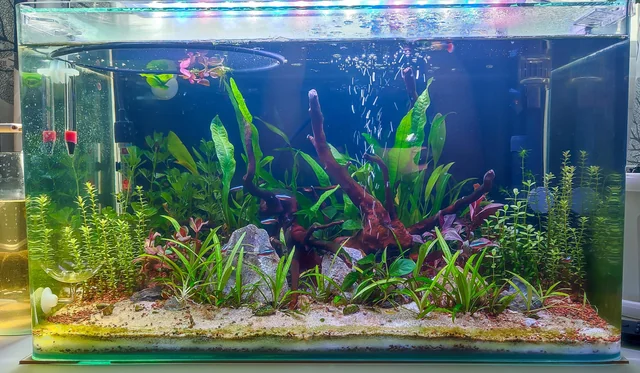
Mid-ground plants are essential for adding depth and perspective to an aquascape. Aquarists can create a sense of three-dimensionality and scale by strategically placing these plants between the foreground and background. This layering effect is crucial for achieving a natural-looking environment that draws the viewer’s eye through the aquarium, making the space seem more extensive and more intricate than it is.
Transition and Balance
These plants serve as a transitional element that bridges the gap between the low-growing foreground plants and the taller background vegetation. This transition is about height and involves color, texture, and form. Mid-ground plants often have medium-sized leaves and a bushy growth habit, which helps to soften the contrast between the different layers of the aquascape, creating a harmonious and balanced composition.
Focal Points and Interest
While foreground and background plants frame the aquascape, mid-ground plants often become the show’s stars. They can create focal points within the tank, drawing attention to areas of interest such as a piece of driftwood, a rock formation, or the base of a waterfall. The unique shapes, colours, and textures of mid-ground plants add visual interest and complexity to the aquascape, making it more engaging to the viewer.
Ecological Contributions
Habitat and Shelter
Mid-ground plants provide essential habitat and shelter for fish and invertebrates. The leaves and stems of these plants offer hiding spots and breeding grounds, contributing to the well-being and natural behaviour of the aquarium inhabitants. This cover is critical in community tanks, where species require space to thrive.
Water Quality and Oxygenation
Mid-ground plants absorb carbon dioxide and release oxygen through photosynthesis, contributing to water oxygenation. They also play a role in nutrient cycling, absorbing nitrates, phosphates, and other waste products, which can help reduce algae growth and maintain water quality. The presence of healthy mid-ground plants is often an indicator of a well-balanced aquatic ecosystem.

Surface Area for Beneficial Bacteria
The leaves and stems of mid-ground plants increase the surface area available for colonising beneficial bacteria. These bacteria are essential for the nitrogen cycle, converting harmful waste products into less toxic substances. By supporting a healthy bacterial population, mid-ground plants contribute to the overall stability of the aquarium’s ecosystem.
Categories of Mid-Ground Plants
Categories of mid-ground plants provide a structured approach to understanding the diverse options available for aquascapers. Each category has unique characteristics and offers the aquarium different aesthetic and ecological benefits.
Rosette Plants
Rosette plants are characterized by their growth pattern, where leaves emerge from a central point, creating a rosette shape. These plants are often used as focal points in the mid-ground due to their attractive leaf shapes and colours.
Examples:
- Echinodorus (Sword Plants): Known for their broad leaves and striking presence. Varieties like Echinodorus ‘Kleiner Prinz’ can make excellent mid-ground choices.
- Cryptocoryne: With varied leaf textures and colours, Cryptocoryne species like C. wendtii provide subtle beauty and texture.
Ericaulon breviscapum
Greetings, fellow aquarium enthusiasts! Today, I am excited to introduce you to a truly remarkable…
Cardomin lyrata
Greetings aquarists! In this article, I will share valuable information on caring for Cardamine Lyrata,…
Bacopa mini Japan
Welcome to my comprehensive guide on Bacopa mini Japan care. If you’re an aquarist looking…
Ludwigia inclinata verticillata
G’day mates! Today, I want to talk about a captivating aquatic plant that can bring…
Rotala blood red
Greetings, fellow aquarists! Today, I want to introduce you to a stunning aquatic plant that…
Myriophyllum roraima
Greetings, fellow aquarium enthusiasts! Today, I want to introduce you to an aquatic plant that…
Stem Plants
Stem plants grow vertically and can be trimmed to maintain desired heights. They are versatile and can add lushness and density to the mid-ground area.
Examples:
- Hygrophila: Fast-growing and adaptable, Hygrophila species can be pruned to fit the mid-ground space.
- Ludwigia: Offering a range of colours from green to red, Ludwigia species add vibrant colour and texture.
Rhizome Plants
Rhizome plants grow horizontally, often along substrates or attached to hardscape materials. They are excellent for adding texture and greenery to the mid-ground. Examples:
- Anubias: With lush green leaves, Anubias can be attached to rocks and wood, making them versatile for mid-ground aesthetics.
- Bucephalandra: With its variety of leaf shapes and colours, Bucephalandra adds a unique visual appeal.
Cryptocoryne Wendtii
Cryptocoryne Wendtii is a versatile and visually striking aquatic plant that has gained popularity among…
Anubias Nana (Anubias barteri var. nana)
In this article, I will guide you through the world of Anubias Nana, also known…
Java Fern (Microsorum pteropus)
As an aquatic enthusiast, I always look for beautiful, low-maintenance plants for my freshwater aquarium….
Bucephalandra
Welcome to my bucephalandra care guide, where I will provide you with all the information…
Bolbitis heudelotii (African Water Fern)
Welcome to my guide on caring for Bolbitis heudelotii, an African Water Fern. This versatile…
Anubias Coffeefolia
Welcome to my guide on Anubias Coffeefolia, a stunning variety of aquatic plants that is…
Carpeting Plants in the Mid-Ground
While traditionally used for foreground, certain carpeting plants can be grown taller or in patches to create a textured, rolling landscape in the mid-ground.
- Staurogyne repens: Compact and bushy, it can create lush patches.
- Micranthemum ‘Monte Carlo’: Offers a dense, leafy mat that can add depth when used in mid-ground areas.
Lilaeopsis
Welcome to my Lilaeopsis care guide! If you’re looking for low-maintenance aquarium plants that can…
Dwarf Baby Tears (Hemianthus callitrichoides)
As an aquarium enthusiast, I am always looking for unique and captivating plants to enhance…
Monte Carlo (Micranthemum tweediei)
Are you looking for a stunning aquatic plant to create a lush carpet in your…
Glossostigma elatinoides
Glossostigma elatinoides, or Glosso, is a highly sought-after aquarium plant that can transform any freshwater…
Dwarf Hairgrass (Eleocharis parvula)
Welcome to my comprehensive guide on caring for Dwarf Hairgrass (Eleocharis parvula), a widespread aquatic…
Marsilea hirsuta
Welcome to my article on Marsilea hirsuta, a fascinating aquatic fern species that is highly…
Floating Plants with Mid-Ground Impact
Floating plants typically reside at the surface, but their roots can hang down into the mid-ground, adding depth and interest.
- Amazon Frogbit (Limnobium laevigatum): Its long roots dangle into the mid-ground, providing texture and hiding spots.
- Salvinia: The floating leaves stay on the surface, while the roots create a delicate curtain effect.
Salvinia (Salvinia spp.)
Greetings, fellow aquarium enthusiasts! Today, I want to dive deep into the fascinating world of…
Water Hyacinth (Eichhornia crassipes)
G’day mates! Today, I will dive into the fascinating world of water hyacinth, also known…
Duckweed (Lemna minor)
G’day, mate! Today, I’m diving into the fascinating world of duckweed (Lemna minor), a versatile…
Water Lettuce (Pistia stratiotes)
Greetings, fellow aquatic enthusiasts! Today, I will dive into the fascinating world of water lettuce…
Frogbit (Limnobium laevigatum)
Welcome to my Frogbit care guide! In this article, I will share valuable information on…
Water Spangles (Salvinia cucullata)
Hello, my name is Andrea, and today, I want to introduce you to an exquisite…
Mosses
Mosses can be attached to rocks and driftwood in the mid-ground, offering a soft, textured look that contrasts with other plant types.
- Java Moss (Vesicularia dubyana): Easy to grow and shape, perfect for creating green accents.
- Christmas Moss (Vesicularia montagnei): Its unique frond-like appearance adds intricate detail.
Salvinia (Salvinia spp.)
Greetings, fellow aquarium enthusiasts! Today, I want to dive deep into the fascinating world of…
Water Hyacinth (Eichhornia crassipes)
G’day mates! Today, I will dive into the fascinating world of water hyacinth, also known…
Duckweed (Lemna minor)
G’day, mate! Today, I’m diving into the fascinating world of duckweed (Lemna minor), a versatile…
Water Lettuce (Pistia stratiotes)
Greetings, fellow aquatic enthusiasts! Today, I will dive into the fascinating world of water lettuce…
Frogbit (Limnobium laevigatum)
Welcome to my Frogbit care guide! In this article, I will share valuable information on…
Water Spangles (Salvinia cucullata)
Hello, my name is Andrea, and today, I want to introduce you to an exquisite…
Each of these categories offers a unique set of plants that can enhance the beauty and ecological balance of an aquarium. By exploring the detailed posts linked, readers can dive deeper into the specific care requirements, design possibilities, and benefits of each plant type, enabling them to make informed decisions for their aquascaping projects.
Choosing the Right Mid-Ground Plants
Choosing the right mid-ground plants for your aquarium involves a careful consideration of several factors to ensure that the plants not only thrive but also contribute to the aesthetic and ecological balance of your aquascape. Here’s a detailed guide on what to consider and tips for making the best selection:

Factors to Consider
1. Lighting
- Intensity and Spectrum: Different plants have varying light requirements. Mid-ground plants generally need moderate to high light to thrive, especially if they are colourful or have high growth rates. Ensure your lighting setup matches the needs of your chosen plants.
- Duration: Consistent light cycles are crucial. Typically, 8-10 hours of sunlight daily allows most aquatic plants to photosynthesize effectively without promoting excessive algae growth.
2. Water Parameters
- pH and Hardness: Each plant species prefers pH and water hardness. While many mid-ground plants are adaptable, some may require specific conditions for optimal growth and colouration.
- Temperature: Ensure the water temperature in your aquarium is within the preferred range for your chosen plants. Some plants may tolerate a wide range, while others need strict adherence to specific temperatures.
3. Fish Compatibility
- Plant-Eating Species: Some fish and invertebrates are known to nibble on or uproot plants. Research the compatibility of your aquatic pets with the plants you intend to introduce.
- Habitat Requirements: Consider the natural habitat and behaviour of your fish. Some species prefer densely planted environments, while others need more open swimming spaces.
Tips for Selecting Plants Based on Tank Size and Aesthetic Goals
Tank Size
- Scale and Proportion: For smaller tanks, choose mid-ground plants that are smaller and slower-growing to avoid overwhelming the space. In larger tanks, you can opt for taller or bushier species that fill the mid-ground area without looking cramped.
- Growth Patterns: Consider how the plant grows. Vertical growers can add height without taking up much ground space, while horizontal spreaders can fill in the mid-ground area nicely but may require more maintenance to keep them in check.
Aesthetic Goals
- Color and Texture: Use plants with varying leaf colors and textures to create visual interest. For example, the red leaves of Ludwigia can contrast beautifully against the green of Anubias or Cryptocoryne.
- Shape and Structure: Think about the overall shape and structure you want to achieve. Rosette plants like Echinodorus can serve as focal points, while stem plants can add density and lushness.
- Thematic Consistency: Whether you’re aiming for a specific biotope or a fantasy landscape, choose plants that contribute to the theme’s authenticity and coherence. Research plants native to the region you’re emulating or select species that fit the imagined environment.
Additional Considerations
- Substrate Requirements: Some mid-ground plants are heavy root feeders and require a nutrient-rich substrate to flourish. Others might be more forgiving or even prefer to be attached to hardscape.
- Maintenance Level: Be realistic about the amount of time and effort you can dedicate to plant care. Some species require more frequent pruning and care than others.
Planting and Maintenance Tips
Planting and maintaining mid-ground plants in an aquarium involves specific techniques and regular care to ensure they thrive and maintain their aesthetic appeal. Here’s a detailed guide on how to plant and maintain these vital components of your aquascape:
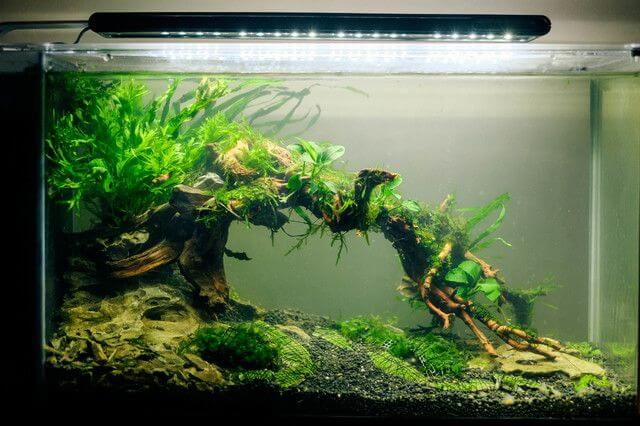
Planting Techniques for Mid-Ground Plants
Preparation
- Acclimatization: Before planting, acclimatize your plants to the water conditions of your aquarium to reduce shock. This can be done by floating them in their bags in the aquarium water for 15-30 minutes.
- Trimming: Trim any dead or damaged leaves and roots. For stem plants, cutting the lower leaves can help prevent rotting once planted and encourage root growth.
Substrate Planting
- Rooted Plants: For plants like Cryptocoryne or Echinodorus, make a small hole in the substrate using your fingers or planting tweezers. Insert the plant into the hole and gently cover the roots with substrate, ensuring the crown (where the roots meet the stem) is not buried to prevent rot.
- Stem Plants: Plant stem plants in small groups to create a bushy effect. Insert the stems into the substrate, leaving enough space between them to allow light and water circulation, which promotes healthier growth.
Attaching to Hardscape
- Rhizome Plants: For plants like Anubias and Bucephalandra that grow on hardscape, use fishing line, cotton thread, or super glue to attach them to rocks or driftwood. Ensure the rhizome (the horizontal stem from which leaves grow) is not buried in the substrate to prevent rot.
Positioning
- Place mid-ground plants strategically to create depth and interest. They should be visible but not overpower the foreground plants or be overshadowed by the background plants.
Maintenance Tips
Pruning
- Regular pruning is necessary to keep mid-ground plants in shape and prevent them from overshadowing others. For stem plants, trim the tops and replant the cuttings if you want to propagate them. For rosette plants, remove old or yellowing leaves at the base.
Cleaning
- Gently clean the leaves of mid-ground plants during water changes to remove algae or debris. Use a soft brush or sponge for delicate plants to avoid damage.
Fertilization
- Mid-ground plants benefit from both substrate fertilizers, especially for root feeders, and liquid fertilizers for water column feeders. Follow the recommended dosages based on your plant load and nutrient levels.
Lighting
- Ensure your mid-ground plants receive adequate light without being shaded out by taller plants or decorations. Adjust the positioning of lights or plants as necessary to achieve even light distribution.
Water Parameters
- Regularly test water parameters (pH, hardness, nutrients) to ensure they remain within the ideal range for your plants. Adjustments to water chemistry should be made gradually to avoid stressing the plants.
CO2 Supplementation
- While not always necessary, adding CO2 can significantly boost the growth and vibrancy of your mid-ground plants. If you choose to use CO2, ensure it is evenly distributed and the levels are carefully monitored to avoid harming your aquatic life.
Observation
- Regularly inspect your plants for signs of pests, diseases, or nutrient deficiencies. Early detection and treatment can prevent more serious problems and keep your aquascape healthy.
Design Ideas and Inspiration
Designing an aquascape with mid-ground plants requires a thoughtful approach to composition, color, and texture. These plants play a crucial role in creating a sense of depth and harmony in the aquarium. Here are some design ideas and inspirations for arranging mid-ground plants, along with successful arrangements in different tank sizes.
Design Ideas for Arranging Mid-Ground Plants
Layering and Depth
- Create Layers: Use mid-ground plants to create a natural transition between the foreground and background. Plant taller species towards the back of the mid-ground area and shorter ones in front to enhance the sense of depth.
- Use of Color and Texture: Incorporate plants with different leaf colors and textures to add visual interest. For instance, the contrast between the fine, delicate leaves of ferns and the broad, vibrant leaves of Cryptocoryne can create a striking effect.
Focal Points
- Highlight Features: Position mid-ground plants around rocks, driftwood, or other features to draw attention to these focal points. Anubias or Bucephalandra attached to a piece of driftwood in the mid-ground can serve as a captivating centerpiece.
- Grouping Plants: Plant groups of the same species together to create impactful visual clusters. Odd numbers of plants often look more natural and aesthetically pleasing.
Naturalistic Themes
- Biotope Aquascapes: Mimic the natural habitats of your fish by choosing plants that are native to their ecosystems. This not only creates a visually appealing setup but also supports the well-being of your aquatic life.
- Seasonal Themes: Use plant colours and textures to evoke a particular season, such as the lush green of spring or the fiery reds and oranges of autumn.
Examples of Successful Mid-Ground Plant Arrangements
Small Tanks (Under 20 Gallons)
- Simplicity and Scale: In smaller tanks, a single type of mid-ground plant, like a small group of Cryptocoryne wendtii, can be effective. Positioning them around a central piece of hardscape helps maintain scale without overcrowding the space.
- Example: A nano tank featuring Staurogyne repens planted densely around a centrally placed, moss-covered rock, creating a lush, miniature landscape.
Medium Tanks (20-50 Gallons)
- Layered Complexity: Medium tanks allow for more complexity. A combination of Anubias nana attached to driftwood in the mid-ground, with taller stem plants like Ludwigia repens behind and shorter carpeting plants in front, can create a rich tapestry of textures and colors.
- Example: A planted tank with a gentle slope from front to back, using Echinodorus bleheri in the mid-ground to provide a green, leafy contrast to the reddish hues of Rotala rotundifolia in the background.
Large Tanks (50 Gallons and Up)
- Dramatic Landscapes: Large tanks offer the opportunity to create surprising, intricate landscapes. Use a variety of mid-ground plants to create depth, such as Hygrophila corymbosa for height and Cryptocoryne for texture, interspersed with patches of carpeting plants.
- Example: A large aquascape with a riverbed theme, where mid-ground areas on either side of a sand path are planted with different species of Cryptocoryne and Anubias, leading the eye towards a densely planted background.
Inspiration and Creativity
The key to successful aquascaping with mid-ground plants lies in experimentation and creativity. Don’t be afraid to try new arrangements or plant combinations. Inspiration can come from natural landscapes, other aquascapes, or even terrestrial gardening. The goal is to create a balanced, visually appealing environment that thrives ecologically and delights aesthetically. Remember, aquascaping is an art form that evolves over time, so enjoy the process of creating and refining your underwater masterpiece.
Common Challenges and Solutions
Maintaining mid-ground plants in an aquarium can sometimes present challenges, including algae growth, nutrient deficiencies, and plant health issues. Understanding these common problems and knowing how to address them is crucial for keeping your aquascape healthy and vibrant. Here are some common challenges with mid-ground plants and their solutions:
1. Algae Growth
Challenge: Algae can overtake mid-ground plants, especially if the aquarium has excessive nutrients, high light levels, or insufficient plant growth.
Solutions:
- Light Management: Reduce the duration of lighting to 6-8 hours per day and ensure the light intensity is appropriate for the plants but not excessive to avoid promoting algae growth.
- Nutrient Balance: Perform regular water changes to reduce nutrient levels, especially if nitrates and phosphates are high. Use a good quality aquarium substrate that provides the necessary nutrients for plants without overfeeding algae.
- Increase Plant Growth: Healthy, fast-growing plants compete with algae for nutrients. Consider adding CO2 supplementation to boost plant growth, which can help outcompete algae.
- Algae Eaters: Introduce algae-eating fish or invertebrates, such as otocinclus, siamese algae eaters, or amano shrimp, to help control algae levels.
2. Nutrient Deficiencies
Challenge: Plants showing poor growth, discolouration, or leaf deformities may suffer from nutrient deficiencies.
Solutions:
- Comprehensive Fertilization: Use a comprehensive liquid fertilizer with a broad range of macro and micronutrients. Tailor your fertilization routine to the specific needs of your plants based on symptoms of deficiency.
- Root Tabs: For root-feeding plants, insert root tabs near the base of the plants to provide direct access to essential nutrients like iron, potassium, and phosphorus.
- Regular Testing: Test your water regularly for key nutrients and adjust your dosing accordingly. This helps prevent both deficiencies and excesses that can harm plant health.
3. Plant Health Issues
Challenge: Plants may sometimes exhibit signs of stress, such as melting, yellowing leaves, or slow growth, due to improper acclimation, poor water quality, or unsuitable conditions.
Solutions:
- Proper Acclimation: Gradually acclimate new plants to your aquarium conditions by floating them in the tank to equalize temperature and gradually introducing tank water to their bags before planting.
- Water Quality: Maintain high water quality with regular water changes and adequate filtration. Keep an eye on ammonia, nitrite, and nitrate levels, ensuring they are within safe ranges for your plants and fish.
- Suitable Conditions: Ensure the environmental conditions, including temperature, pH, and hardness, are ideal for your specific plants. Research each plant’s needs and try to match them as closely as possible.
4. Overcrowding and Competition
Challenge: Plants competing for light and nutrients can lead to some being overshadowed or outcompeted, especially in densely planted tanks.
Solutions:
- Pruning and Thinning: Regularly prune fast-growing plants and thin out densely planted areas to ensure all plants receive adequate light and nutrients.
- Strategic Planting: Arrange plants thoughtfully, placing taller varieties towards the back and shorter ones in the front, and consider the mature size of each plant to prevent future overcrowding.
Preventative Measures
- Regular Maintenance: Regular pruning, cleaning, and water changes can prevent many issues before they start.
- Observation: Keep a close eye on your plants for early signs of stress or disease. Early intervention is critical to preventing more severe problems.
- Education: Continuously learn about your plants’ specific needs and the signs of joint issues so you can address them promptly and effectively.
Summary
Creating a stunning aquascape involves more than just adding plants to water; it requires careful selection, placement, and maintenance of various plant types, with mid-ground plants playing a pivotal role. These plants bridge the foreground and background, adding depth, colour, and texture to your aquarium. We’ve explored the essentials of choosing, planting, and maintaining mid-ground plants, covering everything from the importance of lighting and water parameters to the challenges of algae growth and nutrient deficiencies. With the right approach, mid-ground plants can transform your aquarium into a vibrant, living ecosystem.
Source Links
Full Species List
Rosette Plants
Stem Plants
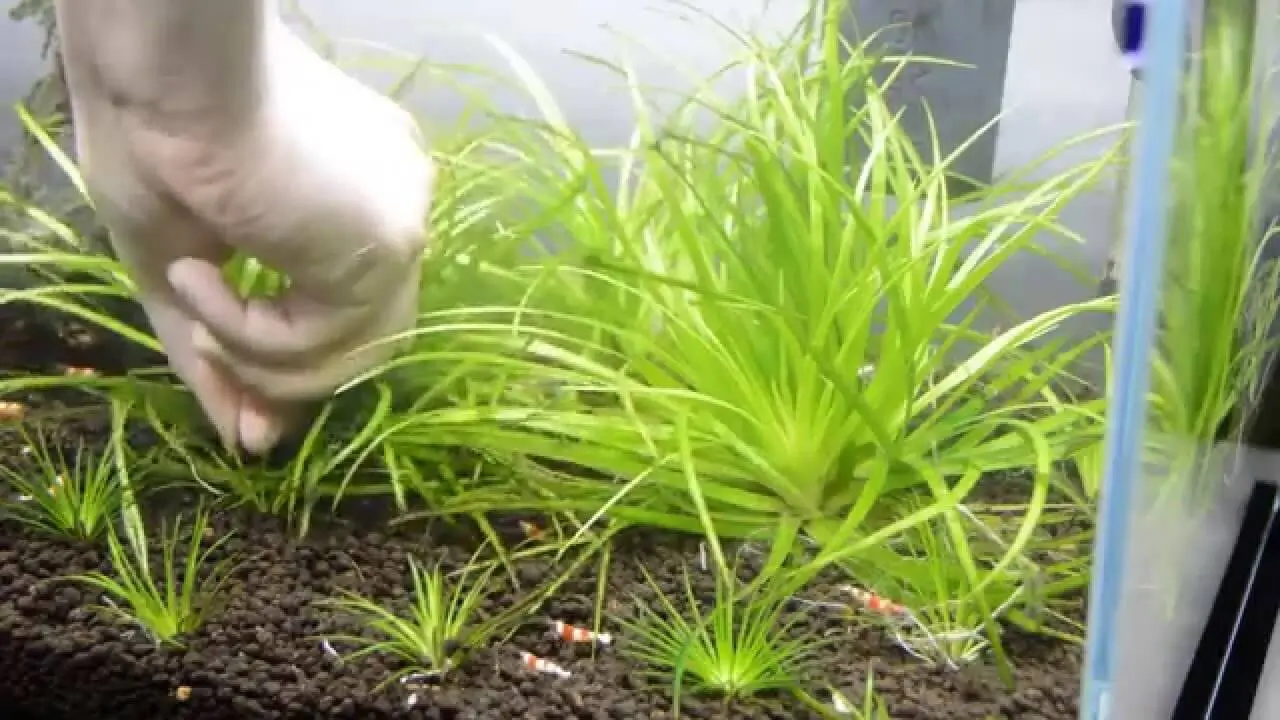 | Eriocaulon breviscapum is a rare, demanding aquatic plant prized for its unique, needle-like leaves and striking appearance in aquascapes, requiring high light, CO2, and a nutrient-rich substrate. |

